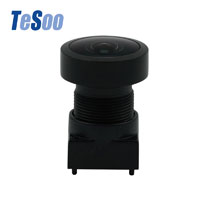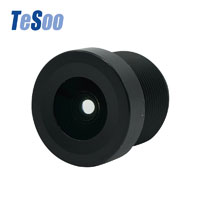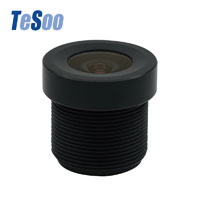Growing Together with Core Customers, the Vehicle Lens Business Has Entered a Harvest Period
1. The barriers to ADAS vehicle lenses are high, with stable orders and high visibility
ADAS lenses have a long-term blue ocean market, with high track certainty and long-term stable order visibility. ADAS lenses have a higher technical threshold in the field of vehicle lenses, and the customer certification cycle is long. It takes 2 to 3 years from certification to the end of the road test. Therefore, the value of ADAS camera lenses is the largest in the field of vehicle lenses, and the overall added value is much higher than that of mobile phone lenses. The blue ocean state will be maintained for a long time in the future.
ADAS lenses have high temperature requirements (-40°C~+85°C). Based on the harsh working environment and high performance requirements of ADAS lenses, glass lenses are more suitable for ADAS solutions because of their better imaging effects and less thermal aberration. However, the thin edge of the lens requires a high edge reflectivity, which is prone to "ghosting" phenomenon, and low energy utilization of light, which seriously affects the judgment of automatic driving.
2. Development of ADAS camera lens
With the increasing requirements for optical imaging and the increasing complexity and high precision of optical components, the traditional grinding process is difficult to meet in terms of economic benefits and production conditions, and the appearance of the molded glass process has greatly improved the manufacturing cost of glass lenses. It has been widely used in this process, which is essentially a thermoforming method. Generally, the glass preform is softened at a high temperature by a precision forming mold, and then it is made by pressing the mold core. It is realized with good economic benefits. Being one of the biggest automotive lens manufacturers, Tesoo has been producing high-precision glass lenses.
The design and processing of the mold are its core barriers. Although the complexity of the mold is relatively simple compared with that of the plastic lens, it requires high-precision machining and ultra-high temperature resistance during the molding process, which determines the key to the process. The mold involves many precision technologies. It directly affects the yield and optical performance of the glass lens.
Based on the long service life of ADAS camera lenses and the characteristics of high industry barriers, the supply chain relationship is generally stable for a long time. Once certified, the visibility of orders can generally be seen for 6 to 8 years, and the certainty of the track is high.
Popular Camera Lens
Hot Camera Lens Articles

 English
English 

